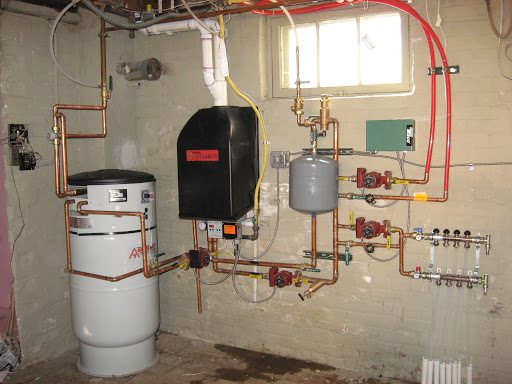Step-by-Step Guide to Maintaining Your Home's Hot Water SystemHow to Properly Maintain Your Home's Hot Water System
Step-by-Step Guide to Maintaining Your Home's Hot Water SystemHow to Properly Maintain Your Home's Hot Water System
Blog Article
We've uncovered this post pertaining to How to Maintain Your Water Heater & Prolong its Life directly below on the net and decided it made good sense to quickly share it with you on this site.

Warm water is vital for everyday comfort, whether it's for a revitalizing shower or washing dishes. To guarantee your hot water system runs efficiently and lasts much longer, routine upkeep is vital. This post provides useful ideas and understandings on exactly how to preserve your home's warm water system to stay clear of disturbances and costly fixings.
Introduction
Maintaining your home's warm water system might appear difficult, but with a couple of easy actions, you can ensure it operates smoothly for years ahead. This overview covers everything from recognizing your warm water system to do it yourself upkeep suggestions and understanding when to call professional help.
Value of Preserving Your Warm Water System
Normal upkeep not just extends the lifespan of your hot water system however also ensures it operates effectively. Disregarding upkeep can cause reduced effectiveness, greater energy bills, and also early failing of the system.
Indications Your Warm Water System Requirements Upkeep
Recognizing when your hot water system requires attention can avoid significant problems. Watch out for indicators such as inconsistent water temperature level, unusual noises from the heating system, or rusty water.
Comprehending Your Warm Water System
Prior to diving into maintenance jobs, it's valuable to recognize the standard elements of your warm water system. Normally, this includes the water heater itself, pipes, anode rods, and temperature controls.
Regular Monthly Maintenance Tasks
Routine regular monthly checks can aid catch minor problems prior to they rise.
Flushing the Water Heater
Flushing your hot water heater gets rid of debris buildup, enhancing efficiency and extending its life.
Monitoring and Changing Anode Rods
Anode poles avoid deterioration inside the tank. Checking and replacing them when worn is vital.
Inspecting and Changing Temperature Level Settings
Changing the temperature setups guarantees optimum performance and safety.
Do It Yourself Tips for Maintenance
You can carry out numerous upkeep tasks on your own to keep your warm water system in top problem.
Looking for Leaks
On a regular basis evaluate pipelines and connections for leakages, as these can cause water damage and greater bills.
Checking Stress Relief Valves
Testing the stress relief valve guarantees it works correctly and protects against extreme pressure buildup.
Protecting Pipelines
Protecting warm water pipes lowers warm loss and can conserve energy.
When to Call a Specialist
While DIY upkeep is useful, some issues need specialist knowledge.
Facility Issues Needing Specialist Assistance
Instances include significant leaks, electric problems, or if your hot water heater is consistently underperforming.
Routine Specialist Maintenance Perks
Professional upkeep can include extensive assessments, tune-ups, and ensuring compliance with security criteria.
Conclusion
Routine upkeep of your home's hot water system is necessary for efficiency, durability, and price savings. By complying with these tips and understanding when to look for professional assistance, you can ensure a reputable supply of warm water without unexpected interruptions.
How to Maintain an Instant Hot Water Heater
Before tinkering with your hot water heater, make sure that it’s not powered on. You also have to turn off the main circuit breaker and shut off the main gas line to prevent accidents. Also turn off the water valves connected to your unit to prevent water from flowing into and out of the appliance. 2. When you’re done, you have to detach the purge valves’ caps. These look like the letter “T” and are situated on either side of the water valves. Doing so will release any pressure that has accumulated inside the valves while at the same time avoid hot water from shooting out and burning your skin. 3. When the purge valves’ caps are removed, you have to connect your hosing lines to the valves. Your unit should have come with three hoses but if it didn’t, you can purchase these things from any hardware or home repair shops. You can also get them from retail stores that sell water heating systems. Read the user’s manual and follow it to complete this task properly. When the hosing lines are connected, open the purge port’s valves. 4. You should never use harsh chemical cleaners or solutions when cleaning your unit. Make use of white vinegar instead. It should be undiluted and you’ll probably use about 2 gallons. 5. Now flush your water heater. This task should probably take about 40 minutes. We can’t give you specific directions for this because the procedure is carried out depending on the type, model and brand of your heater. With that being said, refer to the user’s manual. 6. When you’re done draining the unit, you have to turn off the purge port valves again. Remove the hosing lines that you earlier installed on each of the water valves. Put the valve caps (purge port) back in their respective places and be very careful so as not to damage the rubber discs that are found inside these caps. 7. Now that everything’s back in place, check your user’s manual again to find out how to reactivate your water heating system. 8. Once it is working, turn one of your hot water faucets on just to let air pass through the heater’s water supply pipes. Leave the tap on until water flows smoothly out of it. https://www.orrplumbing.com/blog/2014/september/how-to-maintain-an-instant-hot-water-heater/

We had been brought to that editorial about Tips on Maintaining a Water Heater through an associate on a different web page. Be sure to take the opportunity to share this write-up if you appreciated it. I thank you for your readership.
Quote & Schedule Report this page